Monitoring of Field Patrolling Efforts, Vietnam: Insights from a Forest Station in Pu Hu Nature Reserve
Abstract
1. Introduction
2. Materials and Methods
2.1. Area of Interest
2.2. Data Collection
2.3. System of Patrol Planning and Operation
2.4. Estimating Ranger Patrol Effort
2.5. Data Analysis
3. Results
3.1. Quantify of Patrol Performance
3.1.1. General Patrol Efforts
3.1.2. Correlation of Calculated Variables in Rain Season
3.2. Fundamental Factors in Patrol Effort
4. Discussion and Conclusions
Author Contributions
Funding
Institutional Review Board Statement
Informed Consent Statement
Data Availability Statement
Acknowledgments
Conflicts of Interest
Appendix A
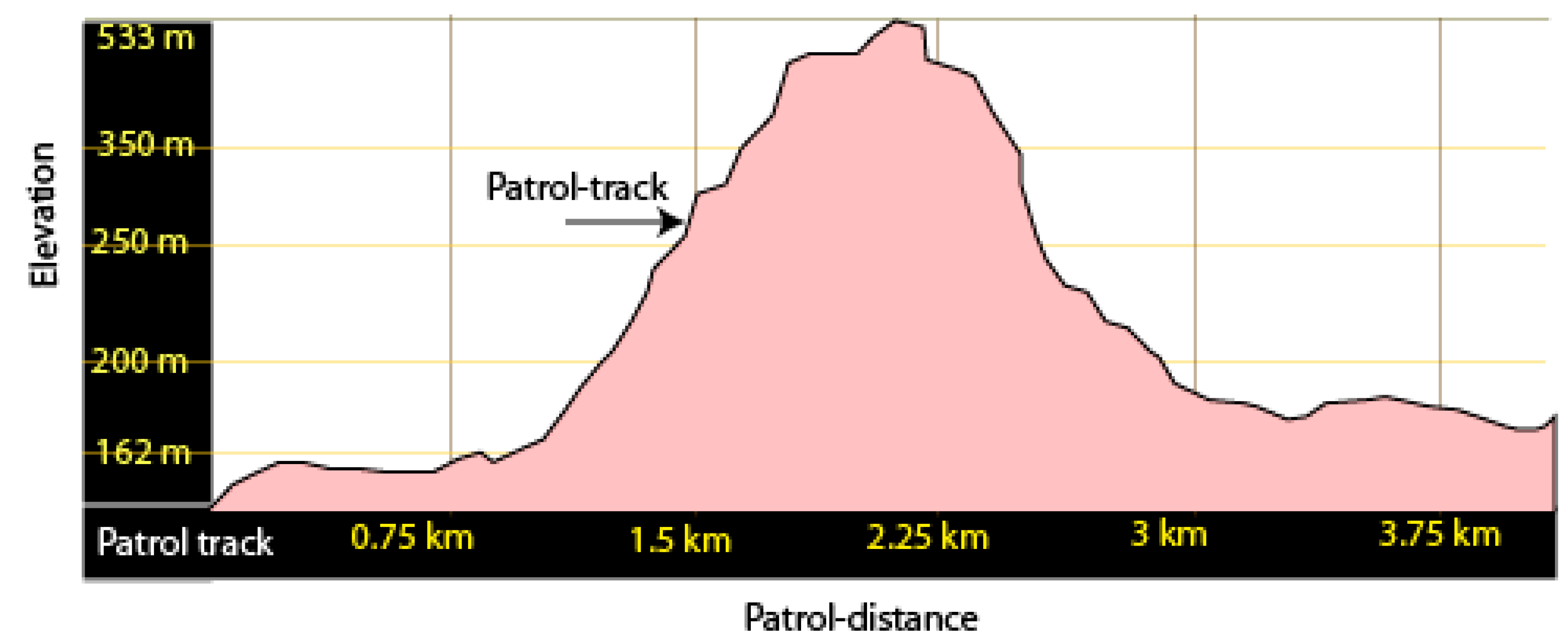
References
- Critchlow, R.; Plumptre, A.J.; Driciru, M.; Rwetsiba, A.; Stokes, E.J.; Tumwesigye, C.; Wanyama, F.; Beale, C.M. Spatiotemporal trends of illegal activities from ranger-collected data in a Ugandan national park. Conserv. Biol. 2015, 29, 1458–1470. [Google Scholar] [CrossRef]
- Messmer, T.A. The emergence of human-wildlife conflict management: Turning challenges into opportunities. Int. Biodeterior. Biodegrad. 2000, 45, 97–102. [Google Scholar] [CrossRef]
- Thapa, S.; Chapman, D.S. Impacts of resource extraction on forest structure and diversity in Bardia National Park, Nepal. For. Ecol. Manag. 2010, 259, 641–649. [Google Scholar] [CrossRef]
- Ormsby, A.; Kaplin, B.A. A framework for understanding community resident perceptions of Masoala National Park, Madagascar. Environ. Conserv. 2005, 32, 156. [Google Scholar] [CrossRef]
- Clark, N.E.; Boakes, E.H.; McGowan, P.J.K.; Mace, G.M.; Fuller, R.A. Protected areas in south Asia have not prevented habitat loss: A study using historical models of land-use change. PLoS ONE 2013, 8, e65298. [Google Scholar] [CrossRef] [PubMed]
- Cardinale, B.J.; Duffy, J.E.; Gonzalez, A.; Hooper, D.U.; Perrings, C.; Venail, P.; Narwani, A.; Mace, G.M.; Tilman, D.; Wardle, D.A.; et al. Corrigendum: Biodiversity loss and its impact on humanity. Nature 2012, 489, 326. [Google Scholar] [CrossRef]
- Dong, K.L.; Sutinee, S.; Hoa, A.X.; Dong, N.P.; Ali, S.; Manop, P.; Kuaanan, T. A Quick comparison of patrol efforts for supportive protection: A case study of two stations in Vietnam. Appl. Ecol. Environ. Res. 2018, 16, 1767–1781. [Google Scholar] [CrossRef]
- Bennett, N.J.; Roth, R.; Klain, S.C.; Chan, K.; Christie, P.; Clark, D.A.; Cullman, G.; Curran, D.; Durbin, T.J.; Epstein, G.; et al. Conservation social science: Understanding and integrating human dimensions to improve conservation. Biol. Conserv. 2017, 205, 93–108. [Google Scholar] [CrossRef]
- Wiafe, C. Wildlife laws monitoring as an adaptive management tool in protected area management in Ghana: A case of Kakum Conservation Area. Springerplus 2016, 5, 1440. [Google Scholar] [CrossRef]
- Thi, H.D.; Krott, M.; Böcher, M. The success of scientific support for biodiversity conservation policy: The case of Ngoc Son Ngo Luong nature reserve in Vietnam. J. Nat. Conserv. 2017, 38, 3–10. [Google Scholar] [CrossRef]
- Kahler, J.S.; Gore, M.L. Beyond the cooking pot and pocket book: Factors influencing noncompliance with wildlife poaching rules. Int. J. Comp. Appl. Crim. Justice 2012, 36, 103–120. [Google Scholar] [CrossRef]
- Jenks, K.E.; Howard, J.; Leimgruber, P. Do ranger stations deter poaching activity in national parks in Thailand? Biotropica 2012, 44, 826–833. [Google Scholar] [CrossRef]
- Kim, L.T.T.; Nichols, J.D.; Brown, K. Firewood extraction and use in rural Vietnam: A household model for three communes in Ha Tinh Province. Agrofor. Syst. 2017, 91, 649–661. [Google Scholar] [CrossRef]
- Ly, T.P.; Xiao, H. The choice of a park management model: A case study of Phong Nha-Ke Bang National Park in Vietnam. Tour. Manag. Perspect. 2016, 17, 1–15. [Google Scholar] [CrossRef]
- Berkes, F.; Berkes, M.K.; Fast, H. Collaborative integrated management in Canada’s north: The role of local and traditional knowledge and community-based monitoring. Coast. Manag. 2007, 143–162. [Google Scholar] [CrossRef]
- Berkeley, U.C.; Cole, A.C. Wildlife Monitoring and Conservation in a West African Protected Area. Ph.D. Thesis, University of California, Berkley, CA, USA, 2010. [Google Scholar]
- Lei, L. The GIS-based research on criminal cases hotspots identifying. Procedia Environ. Sci. 2012, 12, 957–963. [Google Scholar] [CrossRef][Green Version]
- Niedziałkowski, K.; Blicharska, M.; Mikusiński, G.; Jedrzejewska, B. Why is it difficult to enlarge a protected area? Ecosystem services perspective on the conflict around the extension of the Białowieża National Park in Poland. Land Use Policy 2014, 38, 314–329. [Google Scholar] [CrossRef]
- Moreto, W.D. Occupational stress among law enforcement rangers: Insights from Uganda. Oryx 2016, 50, 646–654. [Google Scholar] [CrossRef]
- Jachmann, H. Law Enforcement Monitoring, An Adaptive Management Tool for Wildlife Management; Unpublished Technical Report; Wildlife Division: Accra, Ghana, 2004. [Google Scholar]
- Jachmann, H. Monitoring law-enforcement performance in nine protected areas in Ghana. Biol. Conserv. 2008, 141, 89–99. [Google Scholar] [CrossRef]
- Jachmann, H. Illegal wildlife use and protected area management in Ghana. Biol. Conserv. 2008, 141, 1906–1918. [Google Scholar] [CrossRef]
- N’Goran, P.K.; Boesch, C.; Mundry, R.; N’Goran, E.K.; Herbinger, I.; Yapi, F.A.; Kuehl, H.S. Hunting, law enforcement, and African primate conservation. Conserv. Biol. 2012, 26, 565–571. [Google Scholar] [CrossRef] [PubMed]
- Gong, M.; Fan, Z.; Zhang, X.; Liu, G.; Wen, W.; Zhang, L. Measuring the effectiveness of protected area management by comparing habitat utilization and threat dynamics. Biol. Conserv. 2017, 210, 253–260. [Google Scholar] [CrossRef]
- Dhanjal-Adams, K.L.; Mustin, K.; Possingham, H.P.; Fuller, R.A. Optimizing disturbance management for wildlife protection: The enforcement allocation problem. J. Appl. Ecol. 2016, 53, 1215–1224. [Google Scholar] [CrossRef]
- Gardner, T.A.; Von Hase, A.; Brownlie, S.; Ekstrom, J.M.; Pilgrim, J.D.; Savy, C.E.; Stephens, R.T.; Treweek, J.O.; Ussher, G.T.; Ward, G.; et al. Biodiversity offsets and the challenge of achieving no net loss. Conserv. Biol. 2013, 27, 1254–1264. [Google Scholar] [CrossRef]
- He, G.; Chen, X.; Beaer, S.; Colunga, M.; Mertig, A.; An, L.; Zhou, S.; Linderman, M.; Ouyang, Z.; Gage, S. Spatial and temporal patterns of fuelwood collection in Wolong Nature Reserve: Implications for panda conservation. Landsc. Urban Plan. 2009, 92, 1–9. [Google Scholar] [CrossRef]
- Gray, M.; Kalpers, J. Ranger based monitoring in the Virunga-Bwindi region of East-Central Africa: A simple data collection tool for park management. Biodivers. Conserv. 2005, 14, 2723–2741. [Google Scholar] [CrossRef]
- Shairp, R.; Veríssimo, D.; Fraser, I.; Challender, D.; Macmillan, D. Understanding urban demand for wild meat in Vietnam: Implications for conservation actions. PLoS ONE 2016, 11, e0134787. [Google Scholar] [CrossRef]
- Sassen, M.; Sheil, D.; Giller, K.E. Fuelwood collection and its impacts on a protected tropical mountain forest in Uganda. For. Ecol. Manag. 2015, 354, 56–67. [Google Scholar] [CrossRef]
- Steinmetz, R.; Srirattanaporn, S.; Mor-Tip, J.; Seuaturien, N. Can community outreach alleviate poaching pressure and recover wildlife in South-East Asian protected areas? J. Appl. Ecol. 2014, 51, 1469–1478. [Google Scholar] [CrossRef]
- Walsh, W.F.; Donovan, E.J. Job stress in game conservation officers. J. Police Sci. Adm. 1984, 12, 333–338. [Google Scholar]
- Dong, L.K.; Sinutok, S.; Manop, P.; Techato, K. Participation Patrolling Efforts by Local people: Case of Nam Tien Forest Station in Pu Hu Nature Reserve, Vietnam. In Proceedings of the 3rd International Conference on Energy and Environmental Science, Seoul, Korea, 26–29 January 2019. [Google Scholar] [CrossRef]
- Jachmann, A.H.; Billiouw, M. Elephant poaching and law enforcement in the central Luangwa Valley, Zambia. J. Appl. Ecol. 2017, 34, 233–244. [Google Scholar] [CrossRef]
- Dudley, N. Guidelines for Applying Protected Area Management Categories; No. 21; IUCN: Gland, Switzeland, 2008. [Google Scholar]
- Mukul, S.A.; Herbohn, J.; Rashid, A.Z.M.M.; Uddin, M.B. Comparing the effectiveness of forest law enforcement and economic incentives to prevent illegal logging in Bangladesh. Int. For. Rev. 2014, 16, 363–375. [Google Scholar] [CrossRef]
- Jachmann, H. Monitoring Illegal Wildlife Use and Law Enforcement in African Savanna Rangelands; Wildlife Resource Monitoring Unit: Lusaka, Zambia, 1998. [Google Scholar]
- Jachmann, H.; Blanc, J.; Nateg, C.; Balangtaa, C.; Debrah, E.; Damma, F.; Atta-Kusi, E.; Kipo, A. Protected area performance and tourism in Ghana. S. Afr. J. Wildl. Res. 2011, 41, 95–109. [Google Scholar] [CrossRef]
- Papworth, S.K.; Bunnefeld, N.; Slocombe, K.; Milner-Gulland, E.J. Movement ecology of human resource users: Using net squared displacement, biased random bridges and resource utilization functions to quantify hunter and gatherer behaviour. Methods Ecol. Evol. 2012, 3, 584–594. [Google Scholar] [CrossRef]

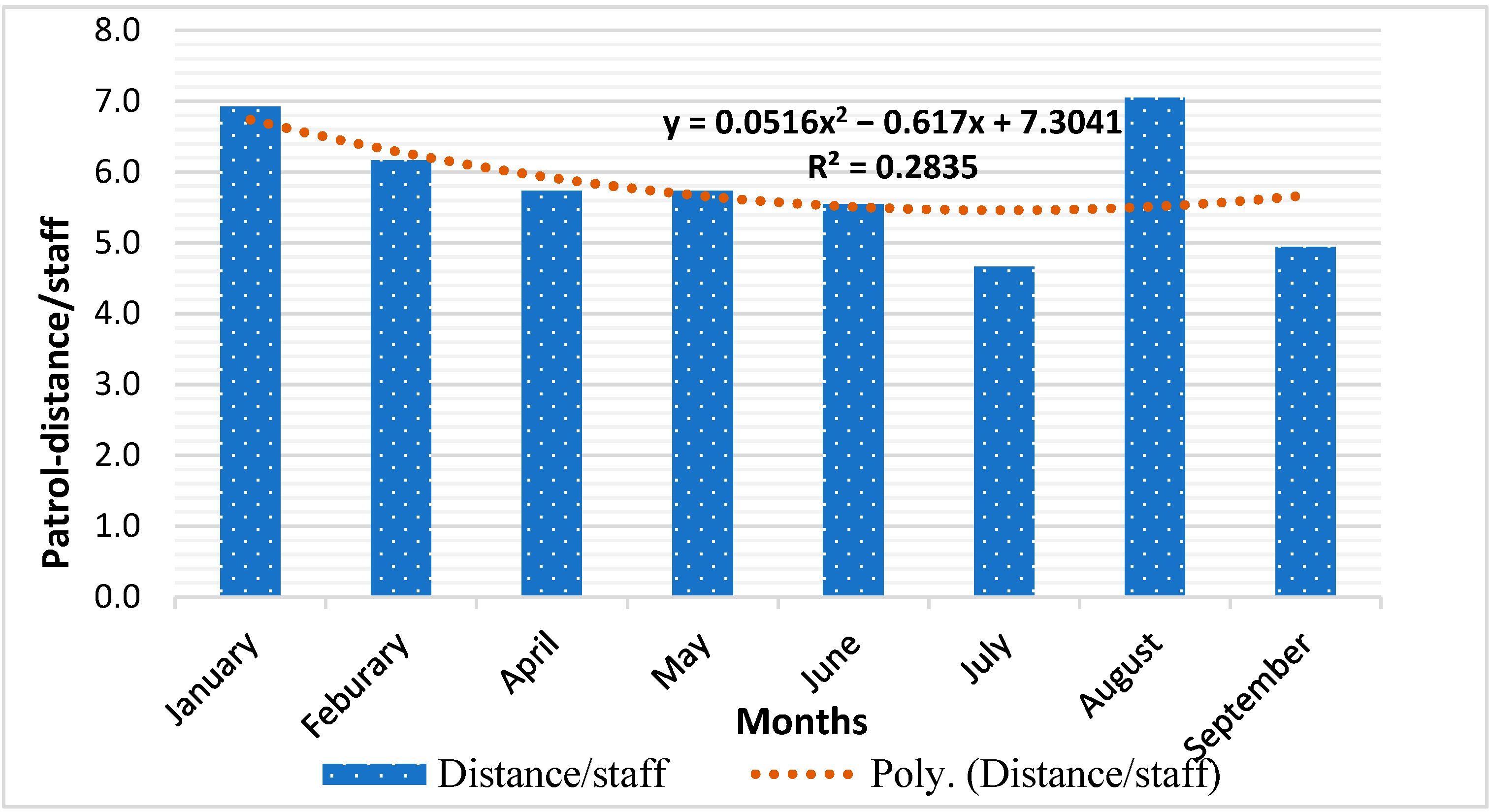
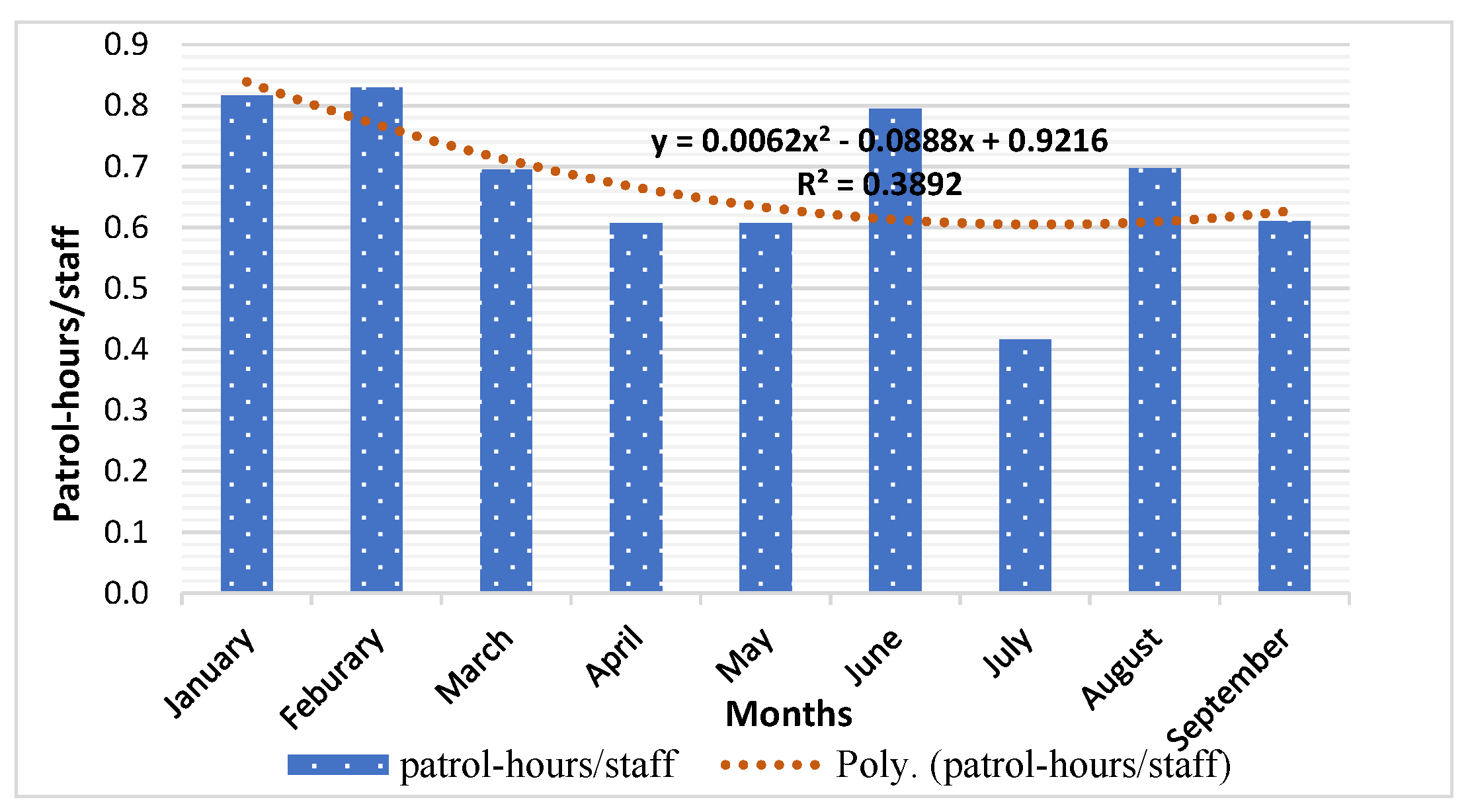
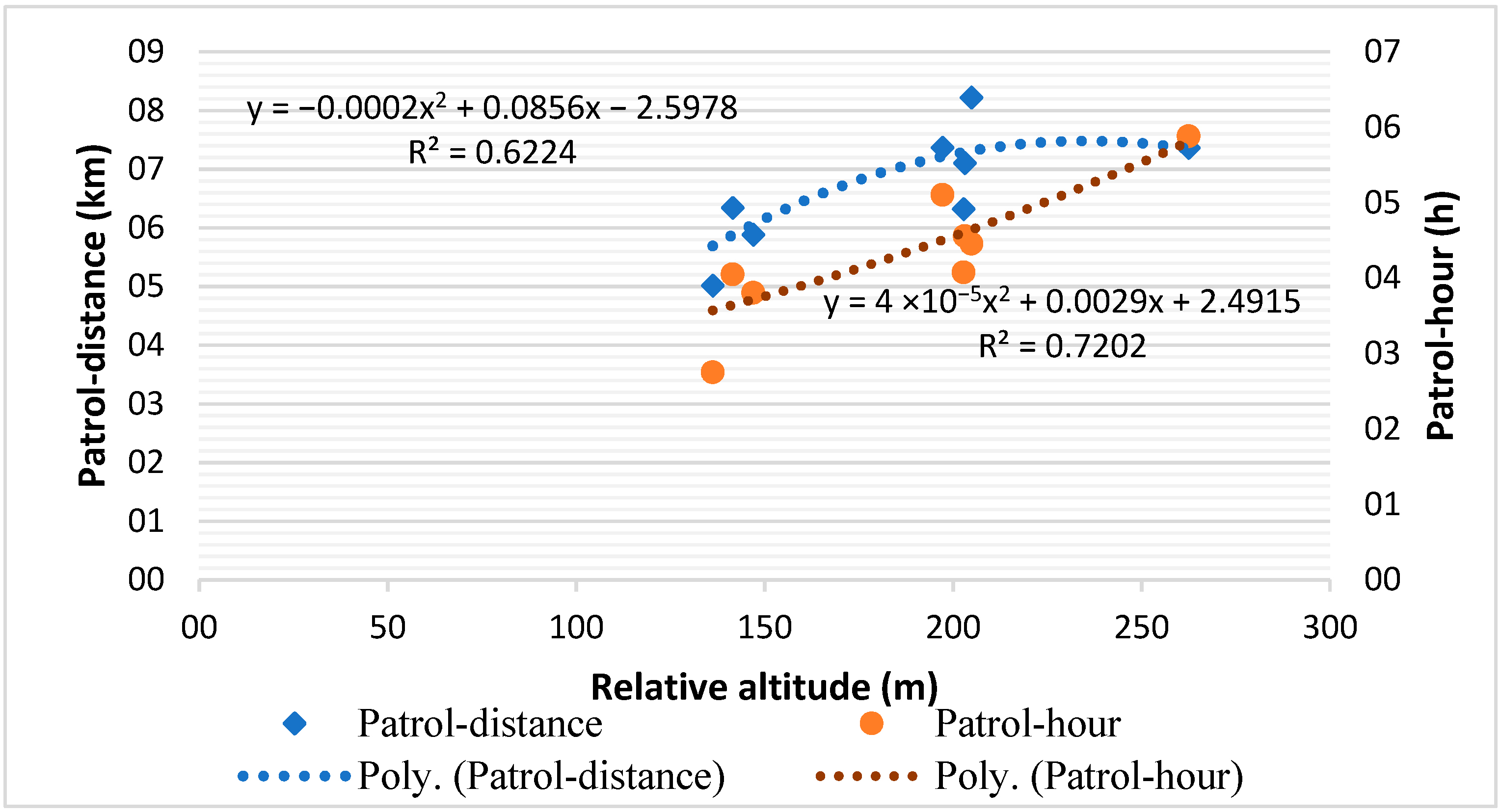
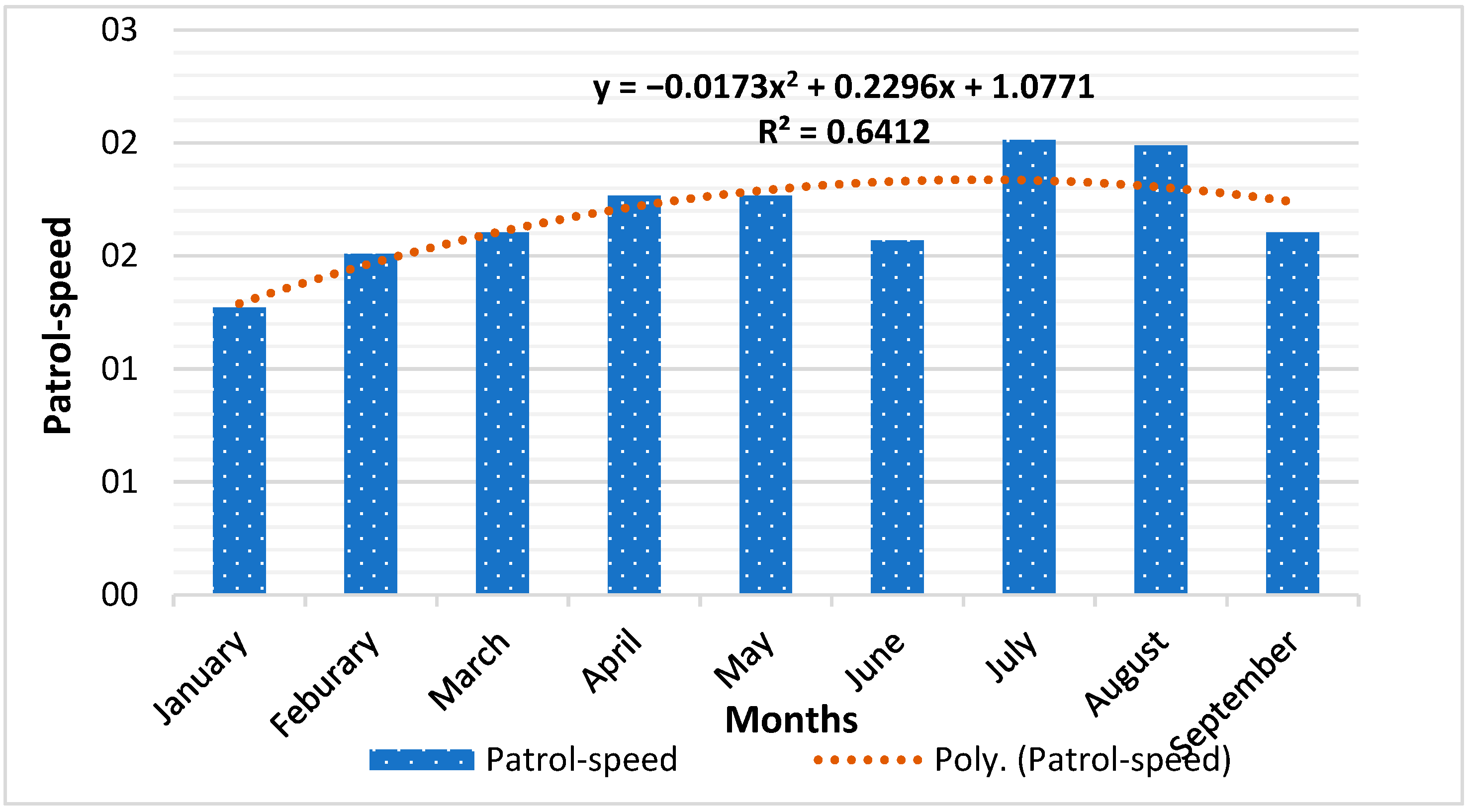
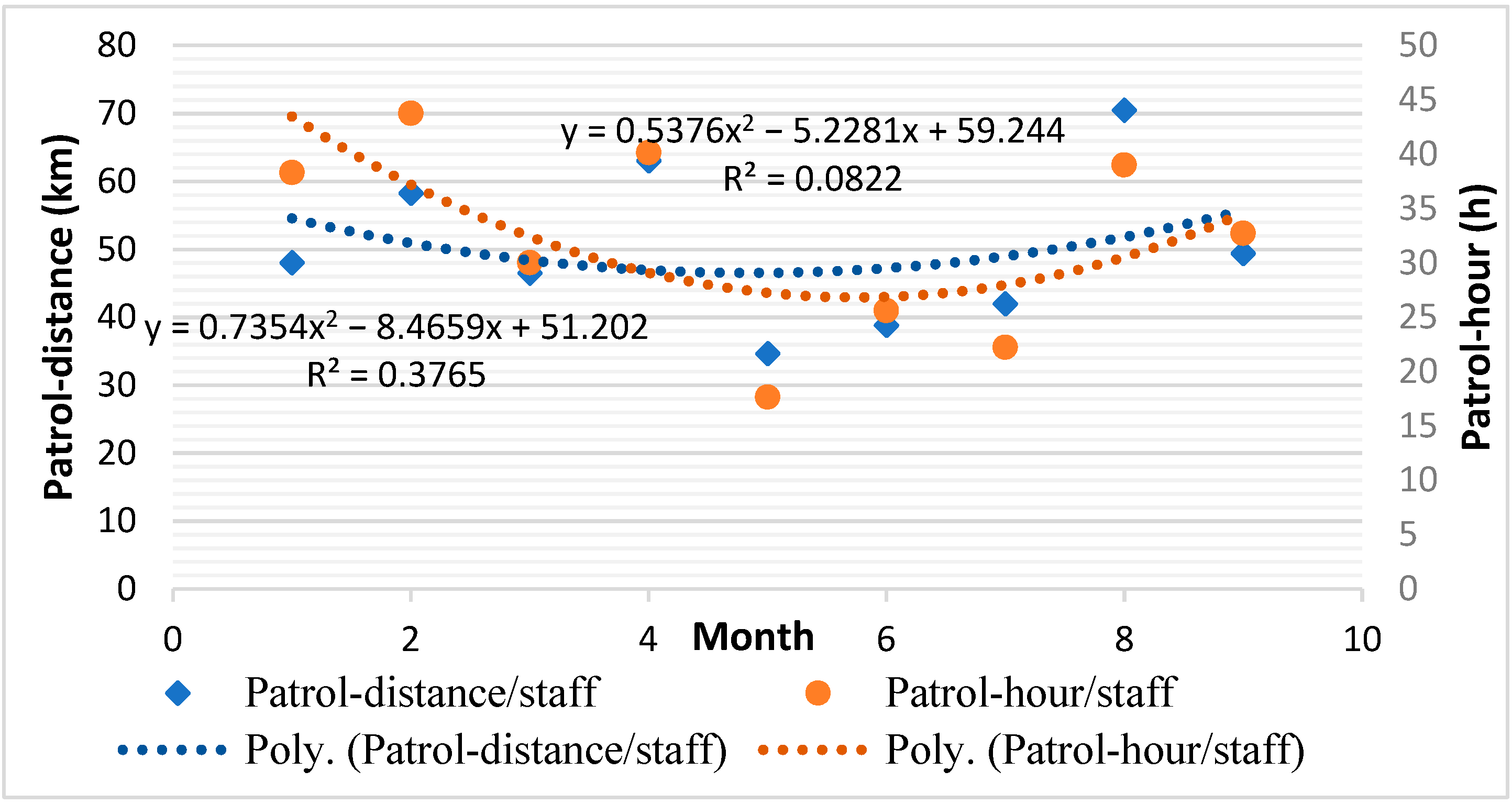
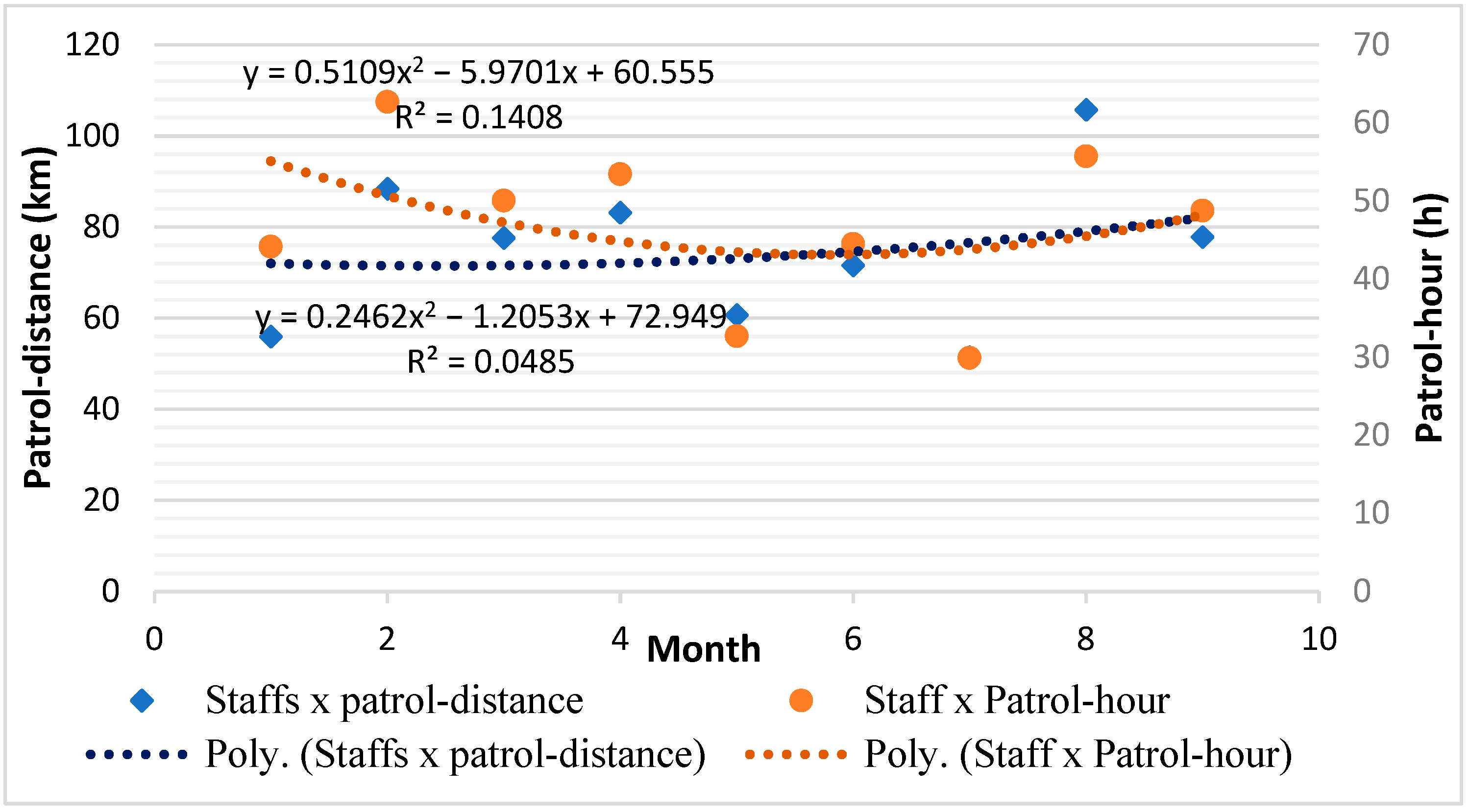
| Sub-Areas | Name of Communities | Size of Sub-Areas | Distance from Forest Station | Relative Altitude (m) |
|---|---|---|---|---|
| (Ha) | (Km) | |||
| 102 | Nam Tien | 1240 | 9–10 | 1200–1320 |
| 120 | Nam Tien | 1081 | 7–9 | 926–1125 |
| 121 | Nam Tien | 754 | 8–9 | 850–930 |
| 124 | Nam Tien | 574 | 8–9 | 541–635 |
| 132 | Nam Tien | 658 | 6–7 | 230–335 |
| 142 | Nam Tien | 100 | 2–4 | 353–430 |
| 146 | Nam Tien | 678 | 7–8 | 454–540 |
| 147B | Nam Tien | 36 | 3–4 | 600–752 |
| 142 | Thien Phu | 545 | 7–8 | 720–822 |
Publisher’s Note: MDPI stays neutral with regard to jurisdictional claims in published maps and institutional affiliations. |
© 2021 by the authors. Licensee MDPI, Basel, Switzerland. This article is an open access article distributed under the terms and conditions of the Creative Commons Attribution (CC BY) license (https://creativecommons.org/licenses/by/4.0/).
Share and Cite
Le Khac, D.; Hoa, A.X.; Tai, L.N.; Nguyen, N.T.H.; Techato, K. Monitoring of Field Patrolling Efforts, Vietnam: Insights from a Forest Station in Pu Hu Nature Reserve. Sustainability 2021, 13, 8407. https://doi.org/10.3390/su13158407
Le Khac D, Hoa AX, Tai LN, Nguyen NTH, Techato K. Monitoring of Field Patrolling Efforts, Vietnam: Insights from a Forest Station in Pu Hu Nature Reserve. Sustainability. 2021; 13(15):8407. https://doi.org/10.3390/su13158407
Chicago/Turabian StyleLe Khac, Dong, Ao Xuan Hoa, Luyen Nguyen Tai, Nha Thi Huynh Nguyen, and Kuaanan Techato. 2021. "Monitoring of Field Patrolling Efforts, Vietnam: Insights from a Forest Station in Pu Hu Nature Reserve" Sustainability 13, no. 15: 8407. https://doi.org/10.3390/su13158407
APA StyleLe Khac, D., Hoa, A. X., Tai, L. N., Nguyen, N. T. H., & Techato, K. (2021). Monitoring of Field Patrolling Efforts, Vietnam: Insights from a Forest Station in Pu Hu Nature Reserve. Sustainability, 13(15), 8407. https://doi.org/10.3390/su13158407






